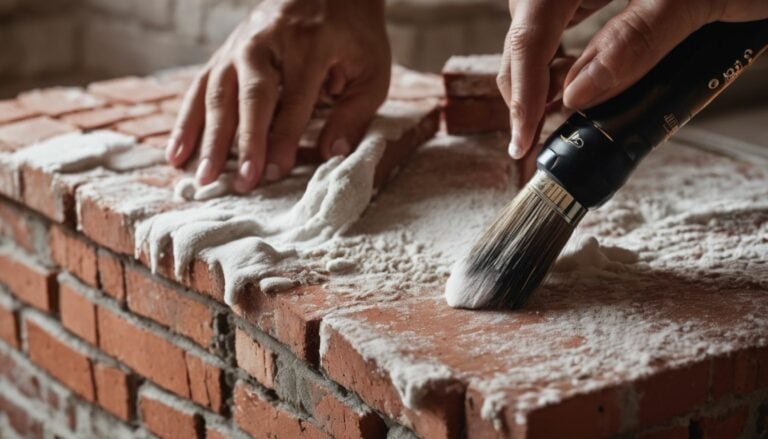Knife Hygiene: When Must A Knife Be Cleaned And Sanitized?
In this article you will discover the critical importance of knife hygiene in food preparation and culinary arts. You will learn when must a knife be cleaned and sanitized, and how to maintain your knives for a safer, more efficient kitchen.
A kitchen knife is the unsung hero of culinary arts, the linchpin that holds the whole operation together. But hold your horses! Before you go dicing and slicing like a wannabe Gordon Ramsay, let’s talk turkey about something equally crucial—knife hygiene.

Quick Takeaways
- Knife hygiene is paramount for food safety and quality.
- Different knives serve unique roles in culinary arts.
- Proper knife care can extend the lifespan of your kitchen tools.
Why Knife Hygiene is a Big Deal
You see, a dirty knife is more than just an eyesore; it’s a breeding ground for bacteria. According to a study by the Center for Disease Control and Prevention (CDC), 1 in 6 Americans gets sick from contaminated food each year. There is more, see the start alert below:
Stat Alert:
- 48 million Americans get sick from foodborne diseases annually [Source 1].
- 128,000 are hospitalized,
- 3,000 die of foodborne diseases.
Yikes! So, keeping your knives clean isn’t just about aesthetics; it’s a matter of public health. If you want to read the entire CDC report, it is available here.
The Role of Knives in Culinary Arts: More Than Just Sharp Objects
Knives are the Swiss Army knives of the kitchen—versatile, indispensable, and tailored for specific tasks. As the New York Times puts it, “choosing the right knife can make or break your culinary experience [Source 1].” Whether you’re chopping onions or filleting a fish, the right knife can be your best friend or your worst enemy.
Types of Kitchen Knives
1. Chef’s knife
A chef’s knife, also known as a cook’s knife, is a versatile kitchen tool that is essential in most culinary settings. Here’s a detailed description:

- Blade: Typically, a chef’s knife has a broad, tapered blade that measures between 6 to 12 inches in length. The blade is usually made of high-carbon stainless steel, which ensures durability, sharpness, and resistance to rust and staining.
- Edge: The edge of the blade is finely honed to a sharp point, allowing for precision cutting. It is designed for a rocking motion, where the tip remains on the cutting board while the heel is lifted and lowered, making it ideal for chopping, dicing, and mincing.
- Spine: The top of the blade, opposite the edge, is called the spine. It is thicker and provides weight and stability to the knife.
- Bolster: Many chef’s knives feature a bolster – a thick junction between the handle and the blade. It provides balance and acts as a finger guard, ensuring safety during use.
- Handle: The handle is ergonomically designed for a comfortable grip, allowing for prolonged use without causing hand fatigue. It can be made from various materials, including wood, plastic, or composite materials.
- Tang: The tang is the portion of the blade that extends into the handle. A full tang, where the metal runs the entire length of the handle, provides better balance and strength to the knife.
- Heel: The heel is the rear part of the blade, closest to the handle. It is the widest and thickest part of the blade, suitable for cutting through harder foods or tasks that require more force.
- Purpose: The chef’s knife is designed to perform a variety of kitchen tasks. From slicing and dicing vegetables to carving meat and chopping herbs, its versatility makes it a staple in both professional and home kitchens.
- Its design, which balances weight between the blade and handle, allows for efficient and precise cutting, making it one of the most popular and essential tools for chefs and cooks around the world.
2. Paring Knife
A paring knife is a small, versatile kitchen knife primarily used for precision tasks in food preparation. Here’s a detailed description:

- Blade: A paring knife typically has a short blade, usually between 2.5 to 4 inches long. The blade is straight and sharp, designed for precision tasks.
- Edge: The edge of a paring knife is finely honed to allow for detailed and intricate cuts. It’s perfect for tasks that require a greater degree of control than a larger knife might offer.
- Tip: The tip of the blade is pointed, which is particularly useful for tasks like removing the eyes from potatoes or hulling strawberries.
- Handle: The handle of a paring knife is designed to be comfortably held in a way that gives the user maximum control over the blade. It’s typically proportional to the blade, ensuring a balanced feel in the hand.
- Tang: Like other knives, a paring knife may have a tang that extends into the handle, providing stability. However, given its size, the tang’s presence or absence is less critical to the knife’s overall balance than in larger knives.
- Purpose: The paring knife is designed for detailed and precision tasks in the kitchen. It’s ideal for peeling, trimming, de-seeding, and other fine work. For instance, it’s the go-to knife for tasks like peeling fruits and vegetables, deveining shrimp, or segmenting citrus.
Its small size and sharp edge make it perfect for tasks that are too delicate or detailed for a larger knife. While it’s not meant for heavy-duty chopping or slicing, its precision makes it an indispensable tool in both professional and home kitchens.
3. Serrated knife
A serrated knife, often referred to as a bread knife, is characterized by its saw-like edge with a series of sharp, jagged teeth. Here’s a detailed description:

- Blade: The blade of a serrated knife is typically long and narrow. The length can vary, but many standard serrated knives are around 8 to 10 inches long.
- Edge: The defining feature of a serrated knife is its wavy or toothed edge. These serrations allow the knife to grip and slice through foods with tough exteriors and soft interiors without crushing them.
- Purpose: While commonly associated with slicing bread (hence the alternate name “bread knife”), a serrated knife is versatile and can be used for various tasks:
- Bread: It can cleanly slice through crusty bread loaves without squishing the soft interior.
- Tomatoes: The serrated edge can easily grip and slice through the slippery skin of tomatoes without crushing the delicate flesh.
- Citrus Fruits: It can cut through the tough and thick skins of citrus fruits like oranges and grapefruits.
- Layered Cakes: It’s ideal for slicing layered cakes without causing them to crumble.
- Tough-skinned fruits and vegetables: Such as pineapples and melons.
- Maintenance: Due to the unique edge, sharpening a serrated knife requires a special technique or tool, different from that used for straight-edged knives. However, they tend to retain their sharpness longer than straight-edged knives because the tips of the serrations come into contact with the cutting board less frequently.
- Design Variations: There are different types of serrated knives with varying serration patterns, from wide and gentle waves to tight and pointed teeth, each designed for specific tasks.
In summary, a serrated knife is an essential tool in the kitchen, especially for those who frequently deal with bread or foods with tough exteriors and soft interiors. Its unique edge design allows it to cut through such foods with ease and precision.
So, the next time you’re in the kitchen, give a nod to your trusty knife. Keep it clean, choose wisely, and you’ll be slicing your way to culinary stardom in no time.
Importance of Cleaning and Sanitizing Knives
Alright, let’s dive deeper into the nitty-gritty of knife hygiene. You’ve got your knife skills down pat, but what about keeping those blades spick and span? Let’s slice through the facts! More facts!

Preventing Cross-Contamination: It’s Not Just a Fancy Term
Cross-contamination is the culinary equivalent of inviting unwanted guests to dinner. Imagine transferring bacteria from raw chicken to your fresh salad. Not a pretty picture, right? Washing hands and surfaces often is crucial. As the folks at the Minnesota Department of Health point out, “harmful bacteria can easily spread throughout the kitchen, hopping onto cutting boards, utensils, and countertops [Source 1].”
Ensuring Food Safety: Your Stomach Will Thank You
Food safety isn’t just a buzzword; it’s a lifestyle. Following simple steps like cleaning, separating, cooking, and chilling can shield your family from the nasty clutches of food poisoning [Source 2]. And remember, knives play a pivotal role in this process. Whether you’re cutting raw meat, scaling fish, or even sharing knives, it’s essential to clean and sanitize them promptly [Source 3].
Maintaining Knife Hygiene: A Sharp Practice
A well-maintained knife is a chef’s best friend. But it’s not just about sharpness; it’s about cleanliness too. Regular cleaning and sanitizing extend the life of your knife and ensure it performs at its peak. Plus, let’s be honest, a gleaming knife just feels good to use!

Now, the next time you wield that knife, give it the TLC it deserves. A clean knife is a happy knife, and a happy knife makes for a happy chef. Bon appétit!
When to Clean and Sanitize Knives
Knives, the unsung heroes of the kitchen, need a bit of pampering too! But when exactly should you roll up your sleeves and give them a good scrub? Let’s cut to the chase!
After Each Use: No Excuses!
It’s a no-brainer. Every time you use that knife, give it a good rinse. It’s like brushing your teeth after every meal. Keeps things fresh and tidy!
Switching Between Different Types of Food: Play it Safe
Imagine using the same knife to cut raw chicken and then slice some juicy watermelon. Not appetizing, right? Always clean your knife when switching between different food items to avoid cross-contamination [Source 4].
Contaminated with Potentially Harmful Substances: Red Alert!
If your knife comes into contact with any harmful substances, it’s time for a deep clean. Safety first!
After Cutting Raw Meat or Scaling Fish: Meaty Matters
Raw meat and fish can be teeming with bacteria. After handling them, wash your knife with hot, soapy water [Source 3].
Sharing Knives: Sharing is Caring, but Clean First!
If you’re passing your knife to a fellow chef or borrowing one, make sure it’s clean. It’s just good kitchen etiquette.
After Cutting Oneself: Ouch!
Accidents happen. If you nick yourself, clean that knife immediately. Blood can be a source of contamination.
After Sharpening: Sharpen the Hygiene Too!
Sharpening can leave metal residues. A quick wash ensures your knife is ready for action.
In a Nutshell: Cleanliness is Next to Chef-liness!
| Action | Why Clean? |
|---|---|
| Cutting different foods | Avoid cross-contamination |
| Contact with harmful substances | Safety first! |
| Cutting raw meat/fish | Bacteria alert! |
| Sharing knives | Good etiquette |
| Accidental cuts | Avoid contamination |
| Sharpening | Remove metal residues |
how to clean a knife: Proper Techniques
Proper Techniques for Cleaning and Sanitizing Knives. Let’s dive deep into the nitty-gritty of keeping those knives spick and span!
Handwashing with Hot, Soapy Water: The Basics
- Before you even think about sanitizing, give that knife a good old-fashioned scrub with hot, soapy water. It’s like giving your knife a spa day! Make sure to get into all the nooks and crannies, especially after they’ve been in contact with raw meat or seafood, as advised by the Food Safety and Inspection Service (FSIS) of the U.S. Department of Agriculture
Sanitizing: Go the Extra Mile
- Prepare a sanitizing solution by mixing 1 tablespoon of unscented chlorine bleach in 1 gallon of warm (not hot) water. Hot water can cause the bleach to evaporate too quickly, reducing its effectiveness, according to the North Carolina State University Extension Publications. Dip your knife in this solution for a few minutes, ensuring it’s fully submerged. Use a brush to scrub it, if needed.
Proper Drying and Storage: The Finishing Touch
- Once your knife is clean and sanitized, rinse it thoroughly in clear water after washing, and dry it completely. A damp knife can be a breeding ground for bacteria. Store it in a knife block or magnetic strip, ensuring it’s not jumbled with other utensils, which can dull the blade and pose a safety risk.
Maintenance and Hygiene Tips for Knives
Proper maintenance and hygiene are crucial for keeping your knives safe and effective in the kitchen. Here are some essential tips to follow:
Regular Sharpening and Honing
- Keep your knives sharp using a sharpening stone or knife sharpener to ensure efficient cutting and reduced risk of accidents.
- Regular honing with a steel rod helps maintain the knife’s edge alignment. Avoid slamming the knife against the rod.
Replacement of Worn or Damaged Knives
- Inspect knives for signs of wear, such as chips, cracks, or bent blades. Worn knives are less safe and effective.
- Replace severely damaged knives to prevent accidents and ensure optimal cutting performance.
Safe Storage Practices
- Store knives in a knife block, magnetic strip, or knife drawer organizer to prevent blade damage and reduce the risk of accidental cuts.
- If storing knives in a drawer, use blade guards or individual knife sleeves to protect both the blade and your hands.
- Avoid tossing knives into a utensil drawer, as it can damage the blade and create a safety hazard.
Remember, maintaining sharp, well-cared-for knives not only enhances kitchen efficiency but also ensures your safety while preparing meals.

The Difference Between Cleaning and Sanitizing
Understanding the distinction between cleaning and sanitizing is vital for when cleaning or learning how to clean knives and maintaining hygiene. Here’s the difference:
Cleaning: Focus on visible Appearance
- Involves removing dirt, dust, and debris from surfaces.
- Primarily focuses on the visible appearance and cleanliness.
- Does not necessarily eliminate bacteria or viruses.
Sanitizing: Focuses on Reducing the of Pathogens
- Aims to reduce the number of bacteria on surfaces to safe levels.
- Typically involves using chemicals to lower the microbial population.
- Does not guarantee the elimination of all pathogens, including viruses.
While cleaning clears surface debris, sanitizing focuses on reducing bacterial presence. Both are essential steps, particularly in food preparation areas. Disinfecting, on the other hand, involves killing bacteria and viruses on surfaces, offering a higher level of pathogen control.
Best Practices for Knife Storage
Proper knife storage is crucial for maintaining both functionality and hygiene in the kitchen. Follow these best practices:
Choosing Sanitary Storage Options:
- Magnetic Knife Strips: Mounting knives on magnetic strips keeps them visible and easily accessible, reducing the risk of contamination.
- Drawer Blocks: Drawer inserts or blocks with individual slots provide protection and separate storage for each knife.
- Knife Rolls/Cases: For chefs on the go, knife rolls or cases offer safe and portable storage.
Avoiding Less Sanitary Storage Methods:
- Knife Blocks: While common, knife blocks can collect dust, debris, and bacteria in the slots, potentially compromising knife hygiene.
- Utensil Drawers: Tossing knives into utensil drawers can lead to blade damage and poses a safety risk.
- Countertop Placement: Leaving knives exposed on countertops can lead to cross-contamination and accidents.
Prioritize the cleanliness of your knife storage options to ensure your knives remain sharp, safe, and ready for use.

Overcoming Fear of Kitchen Knives
Overcoming the fear of kitchen knives is essential for confident, safe cooking and cleaning. Follow these steps:
Proper Knife Handling and Safety:
- Education: Learn proper knife techniques through resources, videos, or classes.
- Start Small: Begin with simple cutting tasks to build confidence gradually, because knowing how to handle a knife properly is essential when cleaning a knife.
- Keep Tools Sharp: Dull knives are more dangerous. Regular sharpening is key, because a sharp knife cuts faster, which reduces the overall time the knife is used, which in turn reduces the chances of cutting yourself and increasing the possibility of food contamination.
- Safety Measures: Use cutting boards with non-slip surfaces and focus on the task to avoid distractions and cutting yourself is important.
Stay Positive And Stay Safe
- Practice: Continuously practice knife skills to build competence and familiarity.
- Positive Mindset: Embrace a positive attitude and remind yourself of your progress.
- Seek Help: If fear persists, consult professionals for guidance and support.
- Share: Teach others what you learn.
Remember, becoming comfortable with knives takes time and practice. Overcoming fear enhances your culinary experience and allows you to explore various cooking techniques, and allows you to safely clean and properly store your knives without getting hurt.
Throughout this discussion, we’ve explored essential aspects of kitchen knife usage and maintenance, and most importantly, answer the question of when must a knife be cleaned and sanitized.
We’ve learned the importance of proper knife selection, safe handling techniques, regular sharpening, effective cleaning and sanitization, and effective storage practices.
Understanding the distinctions between cleaning, sanitizing, and disinfecting helps maintain kitchen hygiene. Overcoming the fear of knives involves education, practice, and positive mindset cultivation.
By following these guidelines and best practices, you can ensure both your safety and culinary success in the kitchen. Remember, knives are valuable tools that, when used skillfully and responsibly, enhance your cooking experience while minimizing risks.
For more answers and explanations to questions that you may still have on this knife cleaning and sanitization topic, please check out the Frequently Asked Questions below (FAQ):

FAQ
1. When must a knife be cleaned and satisfied?
Knives should be cleaned and sanitized after contact with raw meats, between different food tasks, if dropped, during extended use, and before storage. This ensures removal of dirt and pathogens, which is crucial for food safety.
2. When must a knife be cleaned and sanitized after peeling potatoes and before slicing carrots?
After peeling potatoes, a knife should be cleaned and sanitized before slicing carrots to avoid transferring soil-borne bacteria from potatoes to carrots, ensuring food safety and preventing potential illnesses.
3. When must a knife be cleaned and sanitized after cutting bread?
After cutting bread, a knife should be cleaned to remove crumbs and residues. While bread isn’t high-risk for bacteria, if the knife is to be used for raw or other foods afterward, it should be sanitized to prevent cross-contamination and ensure food safety.
4. How often should I clean my knife?
Clean your knife immediately after each use, especially after contact with raw foods, to prevent bacterial growth. During extended tasks, clean it regularly and always after it contacts unclean surfaces. Before storing, ensure the knife is clean and dry.
Periodically check stored knives for rust or residue. Besides cleaning, sanitizing is crucial for eliminating pathogens, especially after handling high-risk foods. Proper maintenance extends the knife’s lifespan and efficiency.
5. What are the rules for cleaning knives?
For safety and hygiene, knives should be handled with care and cleaned immediately after use with warm soapy water. It’s best to hand wash them and ensure the entire knife, including the handle, is cleaned, and dry them promptly. Avoid soaking knives for long periods.
Sanitize knives after contact with high-risk foods and store them properly, not loosely in drawers.
Regular maintenance, including sharpening and checking for rust, is essential.
Always prevent cross-contamination by cleaning and sanitizing knives when switching between different foods. Proper knife care ensures longevity, sharpness, and food safety.
6. Why should knives be cleaned after it has been used?
Knives should be cleaned after use to ensure food safety by removing harmful bacteria and preventing cross-contamination. Clean knives maintain their quality, prevent flavor transfer, work more efficiently, and have a longer lifespan. Additionally, a clean knife is safer to handle, reducing the risk of accidents. Overall, regular cleaning is crucial for hygiene, knife preservation, and health safety.
7. When must the sanitizing step occur?
The sanitizing step must occur after the cleaning process. Once visible dirt, debris, and food residues have been removed from an item through cleaning, sanitizing is done to reduce the number of pathogens and bacteria to safe levels.
In the context of knives or other kitchen utensils, after washing them with soap and water (cleaning), they should be sanitized to ensure any remaining microorganisms are effectively reduced. This sequence ensures maximum effectiveness in promoting food safety and hygiene.
8. What is the best thing to clean knives with?
The best thing to clean knives with is warm soapy water. Using a mild detergent helps remove food residues and contaminants, and hand washing ensures the blade is treated gently, preserving its sharpness and integrity. After washing, rinse and dry the knife immediately to prevent moisture-related issues.
9. How should knives be cleaned and washed by?
Knives should be cleaned and washed by hand using warm soapy water. After washing, they should be rinsed thoroughly and dried immediately with a soft cloth to prevent rusting or spotting. It’s recommended to avoid using abrasive scouring pads, which can damage the blade, and to steer clear of dishwashers, as they can cause the knife to knock against other items, potentially damaging the blade or handle.
10. Is vinegar good for cleaning knives?
Yes, vinegar is good for cleaning knives. It can help remove rust, stains, and mineral deposits. However, after using vinegar, it’s important to rinse the knife thoroughly with water to neutralize the acid and prevent corrosion. Then, dry the knife immediately to prevent any moisture-related issues.
11. What is the best cleaner for old knives?
The best cleaner for old knives, especially those with rust or tarnish, is a mixture of baking soda and water to form a paste. This paste can be applied to the knife and gently scrubbed to remove old stains, rust, and tarnish. After cleaning, rinse the knife thoroughly with water and dry immediately. For added shine, a few drops of lemon juice or white vinegar can also be effective.
12. How do professional chefs clean their knives?
Professional chefs typically clean their knives by hand washing them with warm soapy water, rinsing them thoroughly, and then drying them immediately with a soft clean cloth. They avoid using dishwashers to prevent damage to the blade and handle. Regular sharpening and proper storage, such as using a knife block or magnetic strip, are also part of their knife care routine.
13. Is isopropyl alcohol good for cleaning knives?
Yes, isopropyl alcohol can be used to disinfect the blade of a knife. It’s effective in removing germs and bacteria. However, after using isopropyl alcohol, it’s important to rinse the knife with water to remove any residue and then dry it immediately.
14. What is a natural cleaner for knives?
A natural cleaner for knives is a mixture of lemon juice and baking soda. This combination can effectively clean, brighten, and remove stains from knives. After applying the mixture, rinse the knife thoroughly with water and dry immediately.
15. What do you not wash knives in?
You should not wash knives in a dishwasher as it can damage the blade and handle, and also poses a risk of injury when loading and unloading. Hand washing is the recommended method for cleaning knives.
Join the Conversation!
Loved what you read? Or maybe you’ve got a tip or two about knife care? Dive into the comments below or share this piece with your fellow foodies. Remember, sharing is caring, especially when it comes to kitchen wisdom! Thanks for stopping by!







